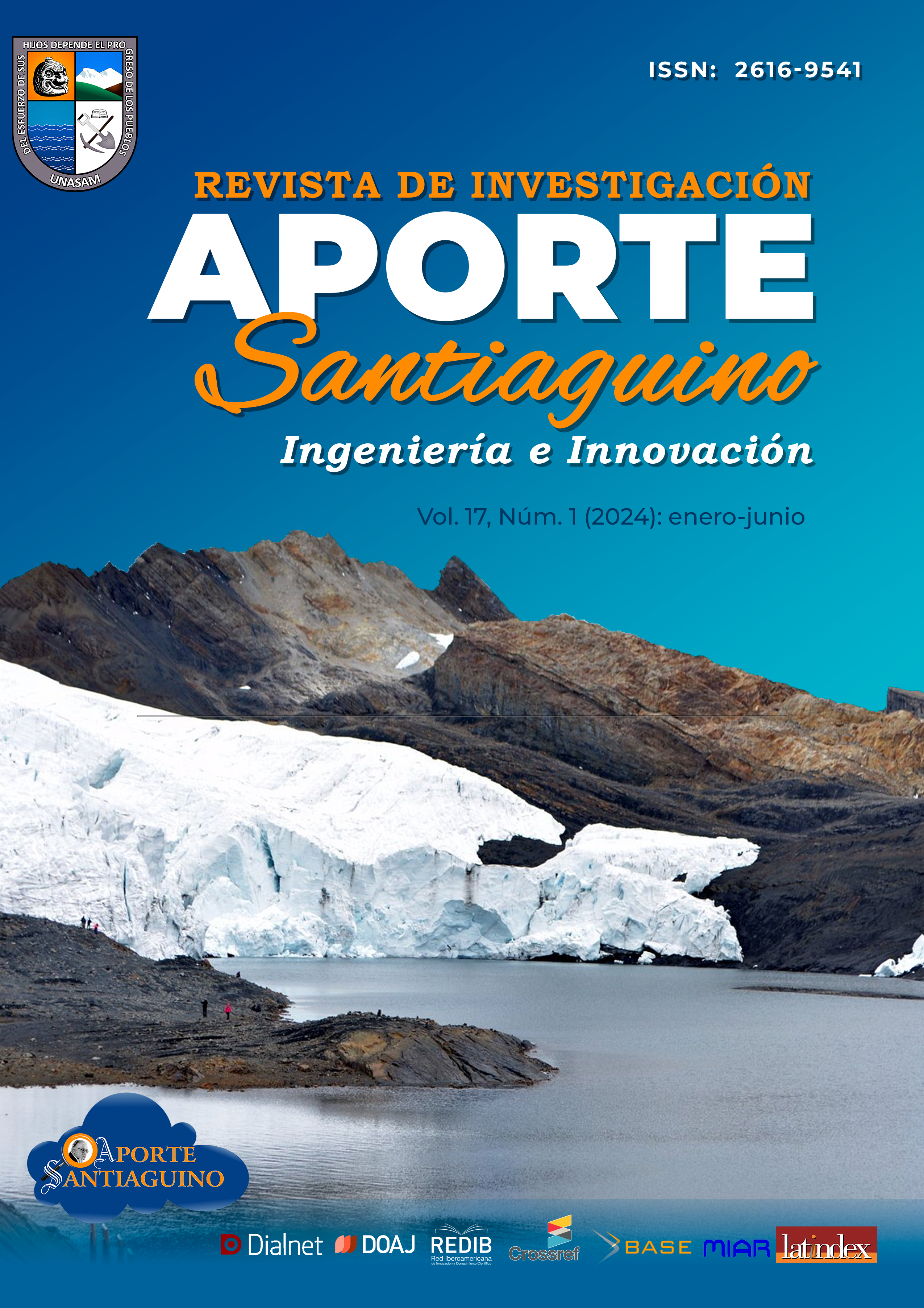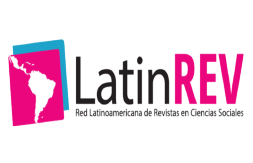Comparative analysis of reference evapotranspiration with empirical methods in the Mosna river basin
DOI:
https://doi.org/10.32911/as.2024.v17.n1.1132Keywords:
Water resource, Reference evapotranspiration, Penman-Monteith, Hargreaves-Samani, Mosna RiverAbstract
The accurate estimation of the reference evapotranspiration (ETo) is a fundamental factor for the planning and management of water resources. The Penman-Monteith method recommended by the FAO is globally accepted as the standard method for calculating ETo, however, this method requires various meteorological parameters, which are generally not found in meteorological stations. In this context, the objective of this research was to evaluate the performance of three empirical methods with respect to the reference method in the Mosna river basin. Daily data provided by SENAMHI and NASA POWER were used in the study. The empirical methods of Hargreaves - Samani, Thornthwaite and Turc underestimated ETo by 1.2%, 56% and 45% compared to Penman-Monteith. Only the Hargreaves – Samani method showed good performance of the ETo with respect to Penman-Monteith evaluated by the test statistics of R2 of 0.86, EPCM of 0.006, RECM of 0.080 and NSE of 0.975. Therefore, the Hargreaves – Samani method that requires only temperature as input can be used in this basin.
Keywords: water resource; reference evapotranspiration; Penman-Monteith; Hargreaves-Samani; Mosna River
Downloads
References
Allen, R. G.; Pereira, L. S.; Raes, D. y Smith, M. (1998). Crop evapotranspiration: Guidelines for computing crop water requirements (FAO Irrigation and drainage paper 56.). Food and Agricultural Orgainzation of the United Nations. http://www.fao.org/docrep/x0490e/x0490e00.htm
ANA. (2015). Estudio de balance hídrico de la cuenca del río Mosna. Autoridad Nacional del Agua. https://repositorio.ana.gob.pe/handle/20.500.12543/2493
Boretti, A. y Rosa, L. (2019). Reassessing the projections of the World Water Development Report. Npj Clean Water, 2(1). https://doi.org/10.1038/s41545-019-0039-9
Donohue, R. J.; McVicar, T. R. y Roderick, M. L. (2010). Assessing the ability of potential evaporation formulations to capture the dynamics in evaporative demand within a changing climate. Journal of Hydrology, 386(1), 186-197. https://doi.org/10.1016/j.jhydrol.2010.03.020
Feng, Y.; Cui, N.; Zhao, L.; Gong, D. y Zhang, K. (2017). Spatiotemporal variation of reference evapotranspiration during 1954-2013 in Southwest China. Quaternary International, 441, 11. https://doi.org/10.1016/j.quaint.2017.01.023
Hargreaves, G. H. y Samani, Z. A. (1985). Reference Crop Evapotranspiration from Temperature. Applied Engineering in Agriculture, 1(2), 96-99. https://doi.org/10.13031/2013.26773
Islam, A. T.; Shen, S.; Yang, S.; Hu, Z. y Chu, R. (2019). Assessing recent impacts of climate change on design water requirement of Boro rice season in Bangladesh. Theoretical and Applied Climatology, 138, 97-113. https://doi.org/10.1007/s00704-019-02818-8
Li, M.; Chu, R.; Shen, S. y Islam, A. R. M. T. (2018). Quantifying Climatic Impact on Reference Evapotranspiration Trends in the Huai River Basin of Eastern China. Water, 10(2). https://doi.org/10.3390/w10020144
Lozoya, C.; Mendoza, C.; Mejía, L.; Quintana, J.; Mendoza, G.; Bustillos, M.; Arras, O. y Solís, L. (2014). Model Predictive Control for Closed-Loop Irrigation. IFAC Proceedings Volumes, 47(3), 4429-4434. https://doi.org/10.3182/20140824-6-ZA-1003.02067
Moriasi, D. N.; Arnold, J. G.; Van Liew, M. W.; Bingner, R. L.; Harmel, R. D. y Veith, T. L. (2007). Model Evaluation Guidelines for Systematic Quantification of Accuracy in Watershed Simulations. Transactions of the ASABE, 50(3), 885-900. https://doi.org/10.13031/2013.23153
Müller Schmied, H.; Adam, L.; Eisner, S.; Fink, G.; Flörke, M.; Kim, H.; Oki, T.; Portmann, F. T.; Reinecke, R.; Riedel, C.; Song, Q.; Zhang, J. y Döll, P. (2016). Variations of global and continental water balance components as impacted by climate forcing uncertainty and human water use. Hydrology and Earth System Sciences, 20(7), 2877-2898. https://doi.org/10.5194/hess-20-2877-2016
Pandey, P. K.; Dabral, P. P. y Pandey, V. (2016). Evaluation of reference evapotranspiration methods for the northeastern region of India. International Soil and Water Conservation Research, 4(1), 52-63. https://doi.org/10.1016/j.iswcr.2016.02.003
Pour, S. H.; Wahab, A. K. A.; Shahid, S. y Ismail, Z. B. (2020). Changes in reference evapotranspiration and its driving factors in peninsular Malaysia. Atmospheric Research, 246, 105096. https://doi.org/10.1016/j.atmosres.2020.105096
Raziei, T. y Pereira, L. S. (2013). Estimation of ETo with Hargreaves–Samani and FAO-PM temperature methods for a wide range of climates in Iran. Agricultural Water Management, 121, 1-18. https://doi.org/10.1016/j.agwat.2012.12.019
Ruiz Alvarez, O.; Singh, V.; Enciso, J.; Ontiveros-Capurata, R. E. y Santos, C. (2020). Observed trends in daily temperature extreme indices in Aguascalientes, México. Theoretical and Applied Climatology, 142. https://doi.org/10.1007/s00704-020-03391-1
Salam, R.; Islam, A. R. M. T.; Pham, Q. B.; Dehghani, M.; Al-Ansari, N. y Linh, N. T. T. (2020). The optimal alternative for quantifying reference evapotranspiration in climatic sub-regions of Bangladesh. Scientific Reports, 10(1), 20171. https://doi.org/10.1038/s41598-020-77183-y
Santos, M. S. N. D.; Castro, I. A. D.; Oro, C. E. D.; Zabot, G. L. y Tres, M. V. (2021). Reference crop evapotranspiration in distinct agricultural regions of Southern Brazil: A comparison of improved empirical models. Revista Engenharia na Agricultura - REVENG, 29. https://doi.org/10.13083/reveng.v29i1.12418
Da Silva, G. H.; Dias, S. H. B.; Ferreira, L. B.; Santos, J. É. O. y Da Cunha, F. F. (2018). Performance of different methods for reference evapotranspiration estimation in Jaíba, Brazil. Revista Brasileira de Engenharia Agrícola e Ambiental, 22, 83-89. https://doi.org/10.1590/1807-1929/agriambi.v22n2p83-89
Song, X.; Lu, F.; Xiao, W.; Zhu, K.; Zhou, Y. y Xie, Z. (2018). Performance of twelve reference evapotranspiration estimation methods to Penman-Monteith method and the potential influences in northeast China. Meteorological Applications, 26. https://doi.org/10.1002/met.1739
Thornthwaite, C. W. (1948). An Approach toward a Rational Classification of Climate. Geographical Review, 38(1), 55-94. https://doi.org/10.2307/210739
Turc, L. (1961). Évaluation des besoins en eau d’irrigation, evapotranspiration potentielle. Formule climatique simplif iée et mise à jour. Annuaire Agronomie, 12(1), 13-49.
Venancio, L. P.; Cunha, F. F.; Mantovani, E. C.; Sediyama, G. C.; Eugenio, F. C. y Aleman, C. C. (2019). Penman-Monteith with missing data and Hargreaves-Samani for ETo estimation in Espírito Santo state, Brazil. Revista Brasileira de Engenharia Agrícola e Ambiental, 23, 153-159. https://doi.org/10.1590/1807-1929/agriambi.v23n3p153-159
Villa, A. O.; Ontiveros, R. E.; Ruiz, O.; González, A.; Quevedo, A. y Ordóñez, L. M. (2021). Variación espacio-temporal de la evapotranspiración de referencia a partir de métodos empíricos en Chihuahua, México. Ingeniería Agrícola y Biosistemas (e2007-4026), vol. 13, no. 1. http://repositorio.imta.mx/handle/20.500.12013/2258
Zhao, L.; Zhao, X.; Zhou, H.; Wang, X. y Xing, X. (2021). Prediction model for daily reference crop evapotranspiration based on hybrid algorithm and principal components analysis in Southwest China. Computers and Electronics in Agriculture, 190, 106424. https://doi.org/10.1016/j.compag.2021.106424
Downloads
Published
How to Cite
Issue
Section
License
Copyright (c) 2024 Adan Alcides Acevedo, Esteban Reyes Roque

This work is licensed under a Creative Commons Attribution 4.0 International License.




















